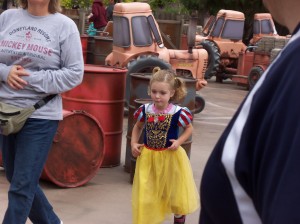Most people can thank Disney for happy childhood memories, favorite fairy tales and charming characters. Many grew up with the Disney movies, their catchy songs and fantasies about a special prince or princess.
And yet there is an ongoing controversy about Disney movies’ messages about stereotypes and gender roles.
Sean Aaron, a BYU student majoring in psychology, said he agrees that Disney stereotypes its characters.
“I don’t like the way men are portrayed in Disney movies,” Aaron said. “For example, in ‘Snow White,’ the seven dwarfs can’t take care of themselves; Snow White had to clean after them and cook for them. It’s like you are either a prince or an idiot.”
There are other stereotypes in “Snow White and the Seven Dwarfs.” Snow White is not only tall, slim and beautiful, but she also loves cleaning and cooking for others. This is the image many people hold of a wife. Dwarfs also reinforce the typical male stereotype: they are hard-working, down-to-earth people who earn money but can’t really take care of themselves.

“The Lion King” is another critically acclaimed cartoon that millions of people around the world love. The messages that viewers can get from the movies is that a male is responsible for protecting females and ruling over them. After Simba runs away, the kingdom is ruined. “You are our only hope,” Nala tells Simba when she meets him after many years. The possible message girls could learn is that they are dependent on boys.
Lydia Moore, a dietetics student at BYU, said she believes Disney stereotypes don’t have much of an affect on children.
“The girls always have to be pretty princesses — that’s true,” Moore said. “But I think Disney also encourages girls to be proactive, like the heroine in ‘Brave.'”
Clark Callahan, assistant professor of communication studies, knows about Disney as part of his field of expertise.
“There is a term called ‘Disneyfication,'” Callahan said. “It’s an idea of taking an environment and creating a fantasy world out of it by sanitizing it and making it devoid of any sort of impurity.”
Callahan said the example of Disneyfication can be in restaurants that build a carefully controlled environment and create an atmosphere of safety in an ideal world.
An article in the magazine “New Internationalist” talks about shopping malls and restaurants that follow the same pattern: customers enjoy an artificially created atmosphere of safety, a haven where they can get away from life’s problems and spend money.
“Disney as a corporation tries to do that,” Callahan said, talking about perfect Disney worlds. “And it affects children.”
Most movies in the U.S. have ratings to inform viewers of thematic content suitability for certain audiences. Disney movies are generally rated G or PG. But even though they are suitable for everyone, the movies influence viewers in a way that is sometimes undetectable.
In 1989 a quote in the marketing plan of tobacco giant Philip Morris stated: “It is reasonable to assume that films and personalities have more influence on consumers than a static poster.” Now, thanks to the research article “Does Watching Smoking in Movies Promote Teenage Smoking” by Todd Heatherton and James Sargent, it is known that teenagers who are frequently exposed to smoking in movies are three times more likely to smoke than those who are not exposed to smoking as much.
Callahan said people don’t know and understand the power of the cultural symbols, such as popular Disney characters, in people’s lives.
“The Disney Channel was the reason we cut off the cable several years ago. My daughter, she was three or four years at the time, came to the living room, and she was in her underwear. And I asked her what was going on, why was she in her underwear. She was dancing around and doing things she saw in ‘The Cheetah Girls.'”




